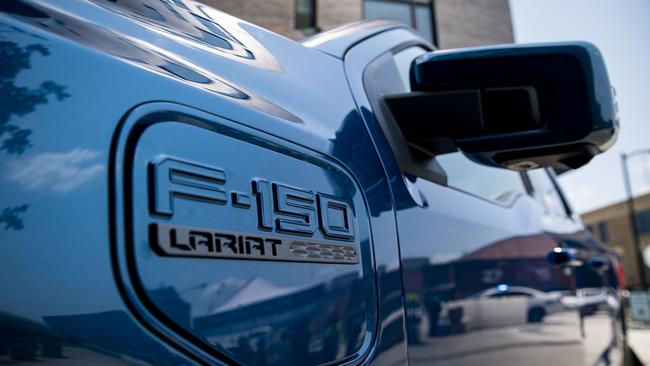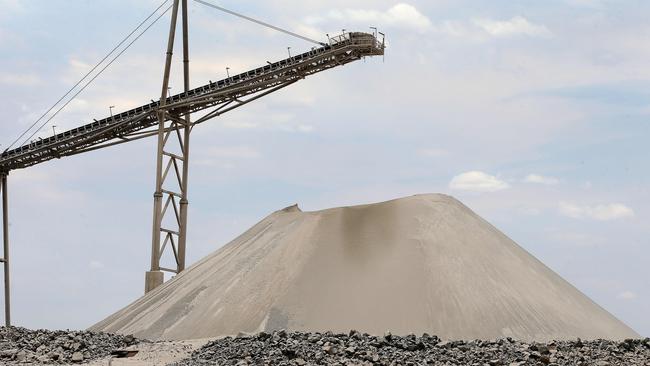Battery demand is propelling lithium exports to become one of the nation’s biggest earners
Figures released by the federal government’s chief commodities forecaster show thermal coal sales are motoring along – but lithium exports for batteries are the big mover.

Australian exports of battery metals could begin to rival thermal coal revenue within a few years, as the surging lithium price turns the critical metals sector into a major earner for Australian miners and chemicals companies.
Figures to be released on Tuesday by the federal government’s chief commodities forecaster, David Thurtell, underline contribution of east coast coal miners to what is tipped to be a third successive record, with thermal coal sales tipped to surge past those of coking coal this financial year.
The Industry Department report suggests Australia’s resources revenue will top $450bn in the 2022-2023 financial year, up from the record $422bn last year.
Combined, energy and metallurgical coal sales are likely to hit $120bn, just pipping iron ore as the country’s biggest commodity export earner, with easing iron ore prices tipped to bring in $119bn for the financial year.

Mr Thurtell forecasts that record thermal coal prices will make the sector worth $62bn this year, making it the third largest revenue generator in Australia’s suite of commodity exports, behind iron ore and LNG, predicted to bring in a record $90bn this year.
But behind the resources’ sectors big news for exporter earners is the extraordinary growth of the nation’s battery metals sector. Combined sales of copper, lithium and nickel are likely to hit $32bn this year, the report forecasts.
That growth is led by lithium sales, which Mr Thurtell predicts will almost triple in value this year, rising from $5bn last financial year to $14bn this year. As global supply lifts next year, lithium sales will earn about $13bn, according to the report.
Copper sales are likely to bring in $14bn each year until 2024, the report says, while nickel sales are also steady at $5bn a year.
Sales of the three commodities are likely to earn $33bn this year, and $32bn the following – easily eclipsing the gold sector’s $25bn contribution to Australia’s export earnings.
With thermal coal prices also likely to ease in the 2023 to 2024 financial year to $38bn, the battery metals trio could be within sight of thermal coal’s fourth spot on the earnings list.

Although most Australian lithium exports are priced on longer-term contracts, with only limited spot market sales, Mr Thurtell notes that spot prices in August of $US4,720 a tonne are a ten-fold lift on the $US418 a tonne recorded in January 2021, as lithium prices hit their nadir on the back of an oversupplied market.
But demand for electric vehicles and grid-scale battery installations – and therefore lithium – has surged again as the threat of the Covid-19 pandemic recedes, and Mr Thurtell’s latest quarterly report suggest Australia is in the box seat to benefit from growing demand – particularly those moving downstream into lithium hydroxide production.
“(lithium concentrate) prices are forecast to rise from an average $US598 a tonne in 2021 to $US2730 a tonne in 2022, and $US3280 a tonne in 2023 before moderating to US$2490 in 2024,” the report says.
“We expect lithium hydroxide prices to lift from $US17,370 a tonne in 2021 to $US38,575 a tonne in 2022 and $US51,510 in 2023, and moderate to US$37,650 by 2024.”
The sharp rise in lithium pricing has lifted export revenue from $1.1bn two years ago to $4.9bn in the past financial year, with further gains as Australian producers move along the value chain.

China’s Tianqi has completed construction of a lithium hydroxide refinery in Western Australia – now partly owned by ASX-listed IGO. Output from Tianqi’s refinery is growing to commercial levels, while a lithium refinery owned by global giant Albemarle and Mineral Resources is currently under commissioning.
A third plant is being built by Wesfarmers and SQM, with production due to begin in 2024.
“By 2024 Australia may have about 10 per cent of global lithium hydroxide refining capacity, rising to about 20 per cent of global lithium refining by 2027,” the report says.
Even though prices across a broad suite of Australian resources exports are likely to soften in 2023 to 2024, taking their total export value to around $375bn, Mr Thurtell noted that would still be the third highest total on record.
The global macroeconomic environment continues to weaken. Spiralling energy costs and problems with COVID-19 outbreaks, particularly in China, are weighing heavily on global growth,” Mr Thurtell said.
“Downside risks are substantial. These include Russia cutting off gas exports to Europe; inflation proving harder to reduce than expected; tighter global financial conditions inducing debt distress in emerging market and developing economies; renewed COVID-19 outbreaks and lingering problems in the Chinese property sector,” he said.
“Whether the global economy experiences a hard or soft landing remains in the balance.”





To join the conversation, please log in. Don't have an account? Register
Join the conversation, you are commenting as Logout